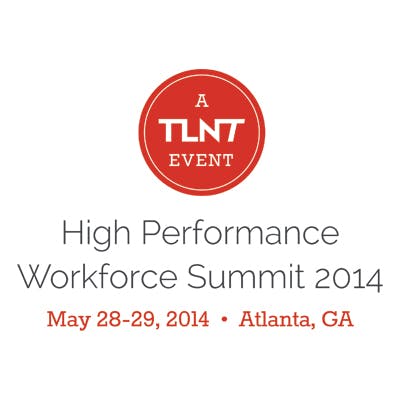How do you define a high performance workforce?
Over the next few weeks we’ll be discussing what a high performance workforce is, how you can implement one and a number of related topics. Here’s our first installment — Defining just what is a High Performance Workforce.
So, how do you define a High Performance Workforce?
“A high performance workforce is collective talent that consistently produces outstanding outcomes at the right cost.”
We crafted this definition very carefully. Every word or phrase is deliberate and has a particular and important meaning. Let’s walk through it piece by piece.
Collective talent
When we hear people talk about building a high performance workforce, what usually comes to mind is finding incredibly high performing individuals. But that’s really not the same thing.
Collective talent is not the same as having a set of the best individually performing talent. While an All-Star team that has the best individual performers may be impressive, the most effective team is the one where everyone works together effectively for the common goal.
Fit and “blend” can be just as or even more important than individual talent. The idea of “collective talent” is important because work increasingly is being done in teams now, not just by individuals anymore.
Talent vs. Employees
Talent — Why didn’t we use the word employees or workforce? In our definition of a High Performance Workforce, talent is not a euphemism for employees; companies have a huge array of people (and even robots) working for them. Talent can consist of employees, temporary workers, independent contractors, professional services firms, outsourced services, and so on.
Because talent is more than just employees, it is incredibly short-sighted if we think that we only need to optimize the employee side of this equation. All the rest of our talent is incredibly important, too.
For example, contingent workers can be more than half of a company’s talent. Even if contingent isn’t 50 percent of your workforce, it’s likely anywhere between 5-20 percent. This portion is growing, and the goal is to optimize the whole talent puzzle, not just a piece of it.
Consistency is Key
Consistently produces — We’ve all experienced a situation that required super-human effort where we went crazy for a day, week, month, or maybe even a quarter to get something important done. After this period of exceptional effort, we would collapse and go back to our “normal rate of productivity.”
But, a high performance workforce isn’t about Herculean efforts that happen once in a while. A high performance workforce means that day-in and day-out, the collective talent of the organization is functioning at the same, high level.
Because we are (mostly) human in terms of talent, we’re not automatons. This means we literally can’t produce the same level of output every day on everything. Instead, we should strive to be at a consistent level, because this isn’t about just occasionally jacking up massive productivity.
Outcomes vs. Financials
Outstanding outcomes — Outstanding is how you should describe a high performance workforce and everything that comes out of it. If the output is not exceptional, by definition it is not a high performance workforce.
A lot of people make the mistake that they have to define outstanding in terms of profits — revenue or some financial result. We deliberately chose a broader term like outcome because, yes, you CAN have a high performance workforce in a company that’s not making money. Sounds ridiculous, right? Let me give you two examples:
- Example 1 — A start-up. It’s easy to imagine a start-up in pre-launch days that is losing money hand-over-fist. Their workforce is performing in an unbelievably high level, but they’re still losing money. We’ve all seen it many times. Not every start-up that’s losing money has a high performance workforce, but they could have a high performance workforce and be losing money.
- Example 2 — A company has chosen a wrong business strategy or is not capitalized at the right financial level. It could have a high performance workforce that is working on the wrong strategy, or, lacks the financial support it needs. Therefore, the financial results may not be there. Changing people due to financial performance can be the wrong response.
Of course, we shouldn’t ignore financial results. However, financial results are not always directly correlated to workforce performance.
Costs
At the right cost — Many HR departments and line managers don’t pay enough attention to the cost part of talent, yet talent typically makes up more than 50 percent of a company’s costs.
If you’re a responsible company and your goal is to have strong financial results, cost will naturally be part of the equation. Most business people will swear their taking the cost of talent into account. And then they’ll tell you they can only hire “A” players.
A $10 million company may have the opportunity to hire the 100 best employees on the planet, but if they each cost $250,000, the company certainly can’t afford to pay $25 million and hire them all. This is another way of saying you can’t afford to hire exclusively “A” players.
Since there is a limit to what you can pay for a consistent, outstanding outcome, you need to figure out which of your roles and positions are really going to impact the company’s most critical outcomes.
Make these people your “A” players and pay those people what you need to get “A” players. For the other roles, where “B” players or “C” players are sufficient, find them and pay them accordingly.
What Now?
To learn more about how you can build a high performance workforce, you need to attend TLNT’s High Performance Workforce Summit in Atlanta, GA., May 28-29, because it’s the one event where you can get everything you need to know.
Click to find out more here (and get a $300 discount if you sign up by April 30).
Stay tuned for the next article in our series.
